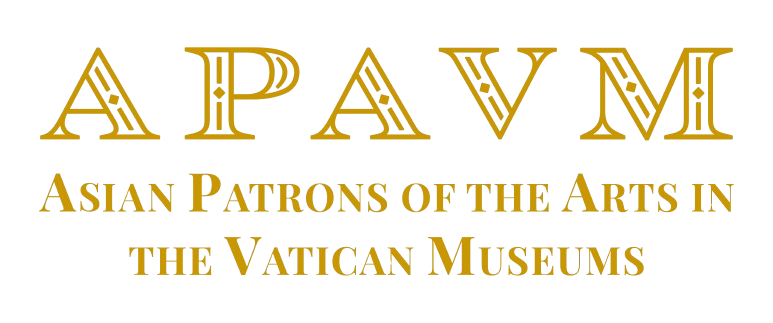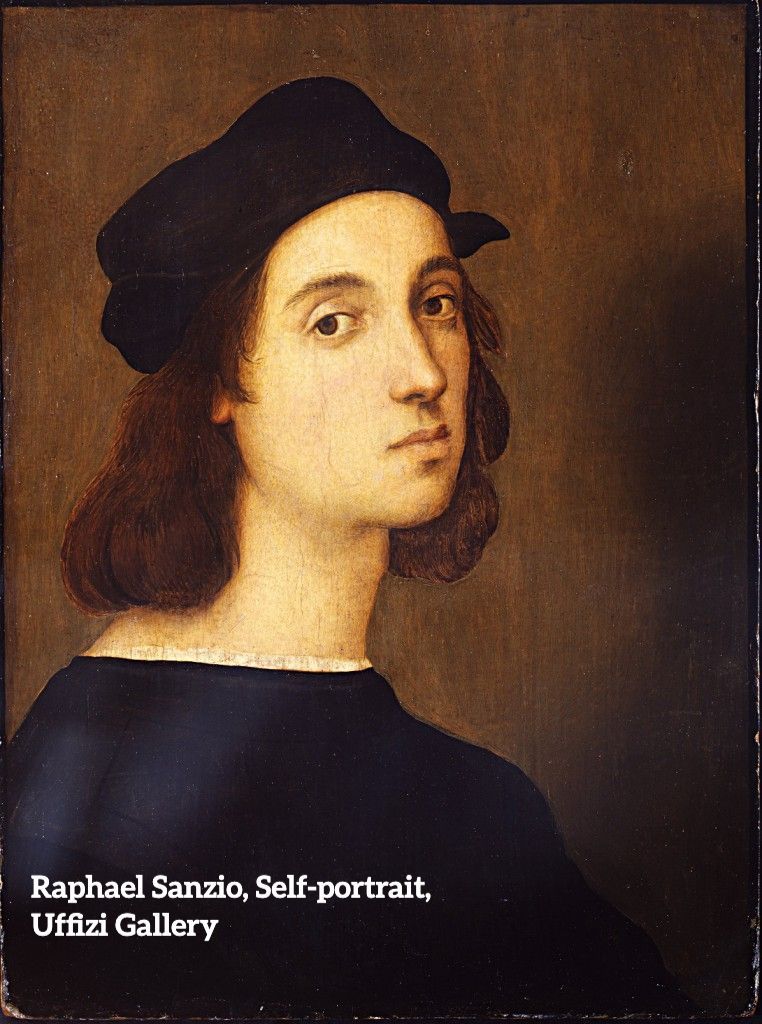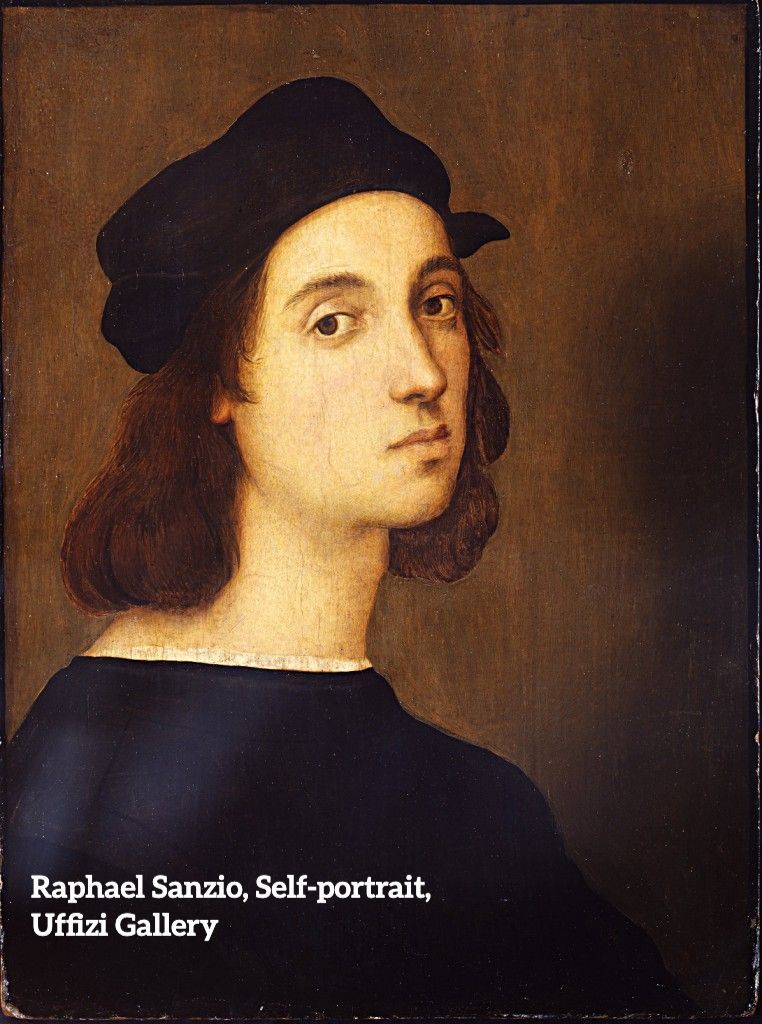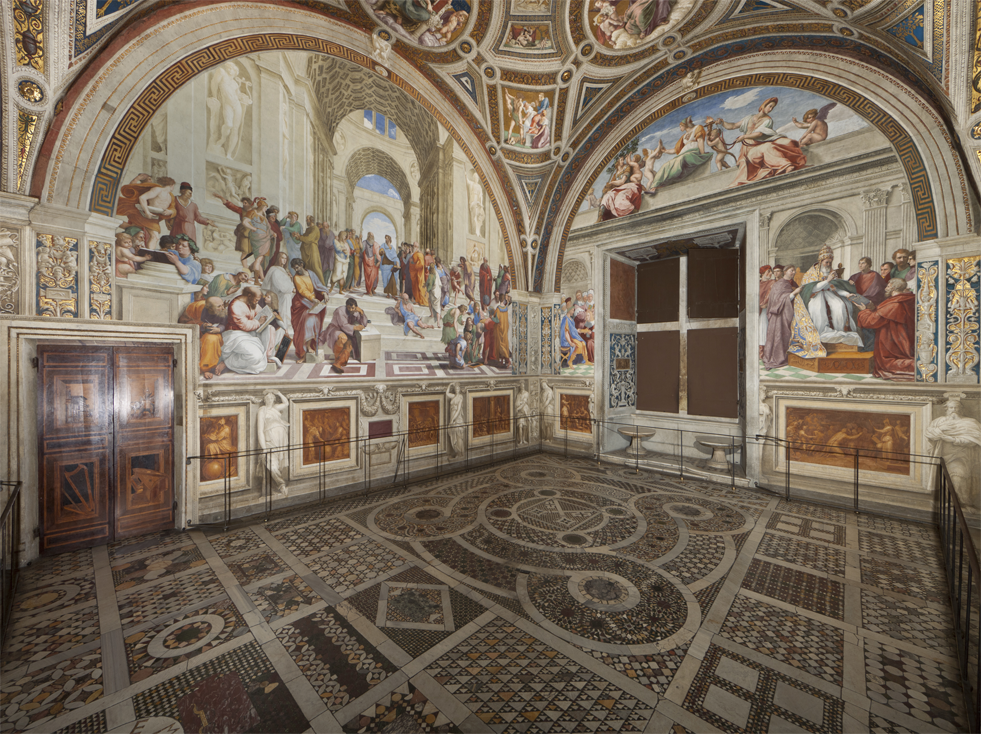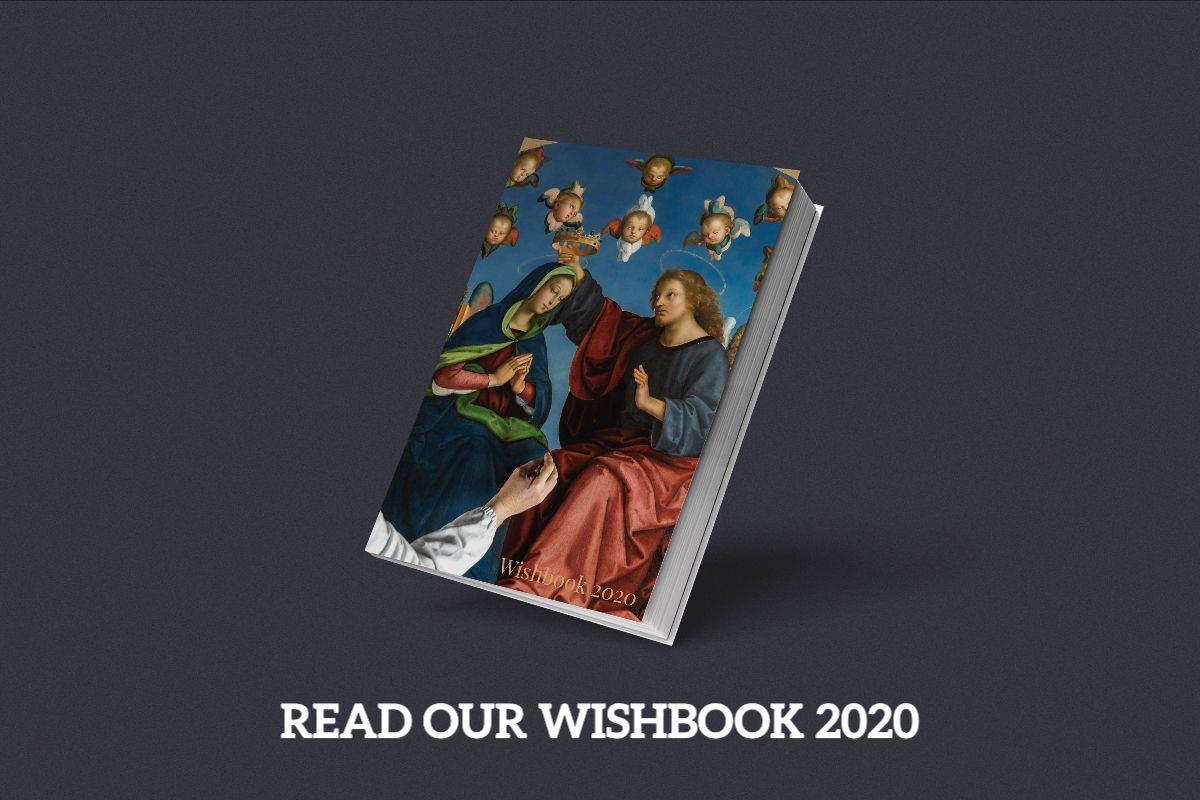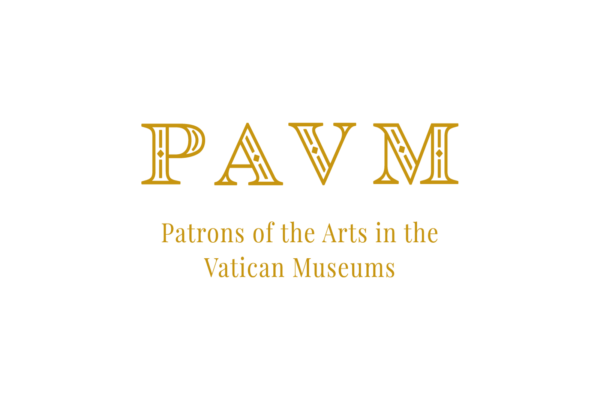The Tapestries in the Sistine Chapel, February, 2020
The meeting between the Vatican and Leo X meant Raphael was architect of the Fabric of St. Peter’s Basilica. This role allowed Raphael to engage with “the Ancient”, which allowed him to formulate that canonical and “classic” style which later became part of his “code”.
Raphael also received from Pope Medici the role of “Conservator of Antiquities”, with the mission of preventing, or at least curbing the perpetration of the monuments and ancient works of Rome. To reinforce this specific intention, he was commissioned to rebuild a topographical plan of ancient Rome. His famous letter to the Pope, written in four hands with his fraternal friend Baldassarre Castiglione, sanctioned the first and important rules of the protection and preservation of antiquities and, more generally, attention to our historical and cultural heritage.
The Vatican Museums have the mission of preserving and sharing the extraordinary artistic, historical and faith heritage of their works. From the sensitivity they developed working on Raphael’s art, they inherited the extraordinary attention to the care of the works and are considered an internationally recognized excellence in the field of conservation and restoration.
The seven specialized laboratories organized by type of material, with almost one hundred specialized technicians who work on all the works of the collections of the Museums and of the Holy See and which are precisely the result of that centuries-old Vatican tradition, is made a reality by the support of a Diagnostic Laboratory for Conservation and Restoration. They provide for each intervention with the necessary scientific investigations. Additionally, the Conservator’s Office are entrusted with the control of the environment and the programmatic plans of care and ordinary maintenance of the works.
The Paintings Restoration Laboratory, the oldest in its establishment, is perhaps the most renowned and many works have been undertaken on the Raphael’s works in recent decades, primarily the restoration of the Vatican Rooms.
During the direction of Carlo Pietrangeli, the restoration of the Room of the Fire of Borgo (Guidi, Rossi de Gasperis) was coordinated between 1980 and 1994 by the great restorer Gianluigi Colalucci which were the same years as the demanding historical restoration of the Sistine Chapel.
At the time of the direction of Francesco Buranelli, the majestic Room of the Signature was restored, with the coordination of Arnold Nesselrath and the conservative supervision of Gianluigi Colalucci (1995-1996) and Maurizio De Luca (1996-1999): 1995-1996 School of Athens (Guidi, Rossi de Gasperis, Violini); 1996-1997 Parnassus (Rossi de Gasperis, Violini); 1997-1998 Disputation of the Holy Sacrament (Violini, Baldelli, Piacentini); 1998-1999 Jurisprudence, vault and base (Violini, Baldelli, Piacentini, Zaralli, Cimino).
At the time of the direction of Antonio Paolucci, the Room of Heliodorus was restored, under the supervision of Maurizio De Luca (2002-2010) and Maria Putska (2011-2012) and the coordination of Paolo Violini: 2002-2004 (Violini, Baldelli, Zarelli); 2005-2006 Liberation of St. Peter (Violini); 2009-2010 Mass of Bolsena (Violini, Piacentini); 2011-2012 Meeting between Leo the Great and Attila (Violini, Piacentini).
And finally the Constantine Room, started under Paolucci and continued until today, with the initial supervision of Maria Putska and then Francesca Persegati and the beautiful team accompanied by Fabio Piacentini, with the scientific direction of Guido Cornini (Bertelli De Angelis, Resca, Salvatori, Settembri, Vettori, Vinciguerra, Oliva, Moretti, Santoro, Ammendola).
All this would not have been possible without the high professionalism of the Vatican restorers, but also without the generous support of our “Patrons of the Arts in the Vatican Museums”: in particular the Chapters of New York, California, Michigan, Texas, United Kingdom, Canada, along with the specific benefactors such as the D’Urso, Gaisman, Gusmano and Carlson families.
Recently, Pope Francis reminded us how Raphael was an important son of the Renaissance era who was not without difficulties, but animated by trust and hope. His Holiness is inviting us to rediscover, through this artist, the spirit of openness that has made everything more beautiful in history, art and culture.
